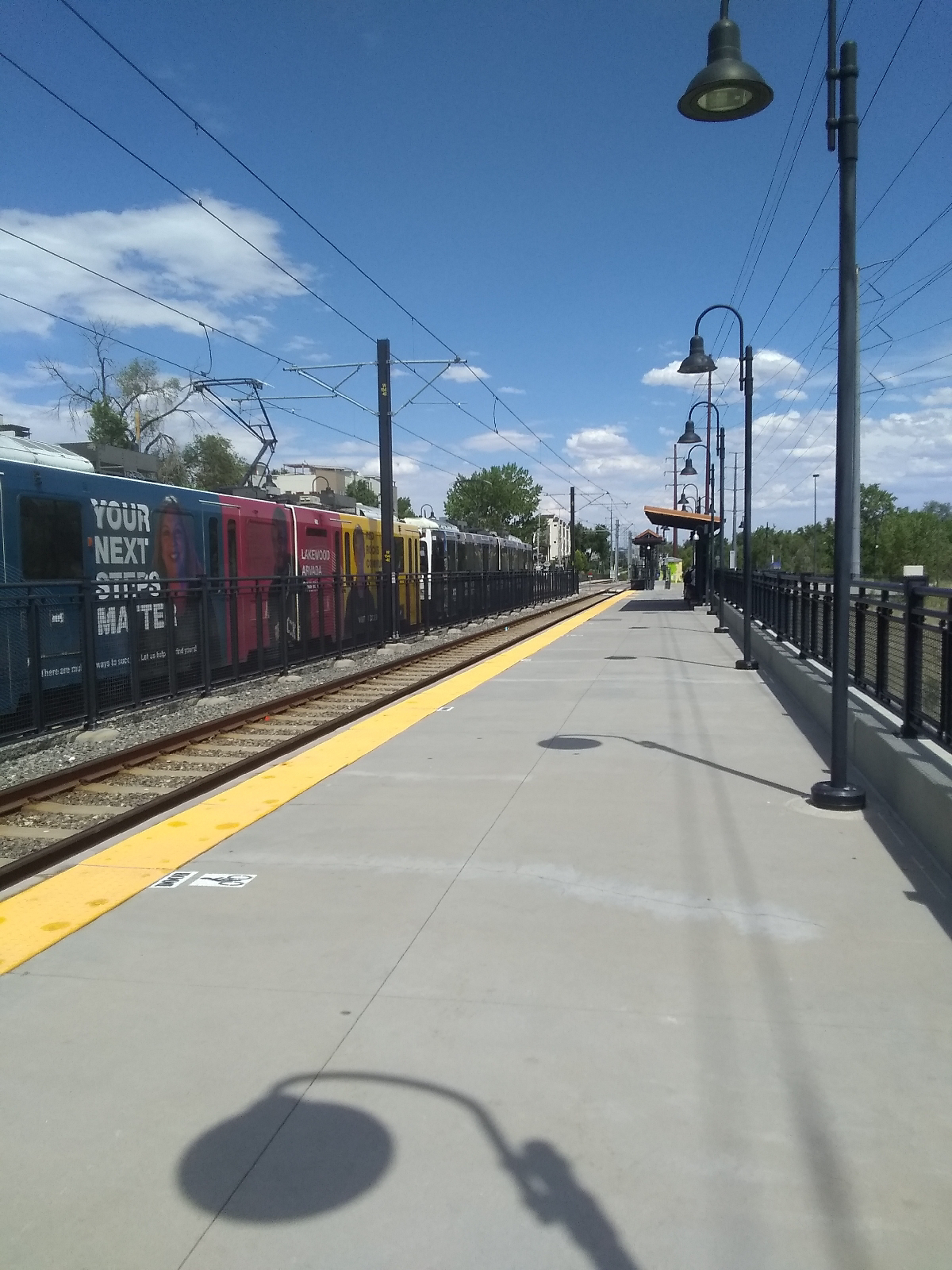In the week since my last hike along Lakewood Gulch, a lot of sediment has been washed into the once crystal clear water. I mentioned that when streams come together, it often takes some time and distance before the waters mix completely. You can see the effect here.
This stretch of the Lakewood Gulch is near downtown Denver and affords some great views of the skyline. It's still in the foothills.
Remember that this land is the stuff that was washed out of the Colorado highlands as the Rockies were being carved and the Foothills were shaped by tributaries of the South Platte River.
Green Mountain is still visible to the west.
The Denver area promotes it's trail system as an alternative to street travel so there are a lot(!) of footbridges and tunnels in the area to get people around obstacles. Lakewood Gulch, at it's approach to the river cuts a respectable valley here.
Federal Boulevard is the last north-south corridor for traffic before downtown Denver. The next major one is I25 and the snarl of on and off ramps that I will have to navigate on the next hike. Decatur-Federal Station is one of two light rail stations that service the big stadium in town, Empower Field, and is home to the Denver Brancos, the local professional football franchise. Across the Gulch is Rude Park with it's baseball field.
In addition to being a gateway to sports, the Decatur-Federal Station provides access to the Colorado Department of Human Services offices just up the hill. I was a little disappointed that the Castro Building is closed while the offices are moving to the newer building next door.
The building was named in memory of the Colorado State Representative and community activist, Richard Castro. What I missed was the mural at the foot of the spiral staircase.
There are other artworks at the station, such as City of Dreams, by Joshua Wiener.
The sculpture is illuminated at night, and is intended to represent a city of progress with little environmental impact. It is a provocative piece for me, rusted metal in view of a place where so many pass under to obtain services to barely survive in a "city of dreams".
The other sculpture seems more uplifting.
Interdependence, by Michael Clapper, displays the handprints of local children in sandstone.
All art pieces are signs and, as such, are not complete without the interpretation by the minds that consume them. It's always appropriate to ask of an art piece, "what do you mean to me", and to be cognizant that it will mean other things, often vastly divergent things, to other minds.
Here's one other sign that seemed strikingly relevant to me
The sign and the stadium seemed to me to be of a whole. I've never been inside Denver's iconic football arena but no one can argue that it's not a centerpiece if the city. The two primary Interstates passing through the city, 25 and 70, practically cross around it.
I'll be investigating this tangle of on and off ramps on the next and final section of the W Line hikes.









































